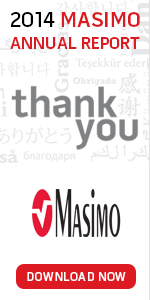| Patient SafetyNet Home | Overview & Clinical Benefits | Enabling Technology | Halo Index | Resources |


Patient Safety Challenges on the General Floor
The last thing you expect when otherwise healthy patients are admitted for routine procedures is that they won’t go home due to a sentinel event.
Unfortunately, the combination of patient-controlled analgesia and lower staff-to-patient ratios on general care floors make it less likely that a clinician will be there to observe an avoidable adverse event.

In August 2012 The Joint Commission issued a Sentinel Event Alert on the safe use of opioids in hospitals.1 This alert reported the incidence of respiratory depression among post-surgical patients to average 0.5 percent – thus for every 5,000 surgical patients, 25 will experience respiratory depression. Failure to recognize respiratory depression and institute timely intervention can lead to cardiopulmonary arrest, resulting in brain injury or death. A retrospective multi-center study of 14,720 cardiopulmonary arrest cases showed that 44% were respiratoryrelated and more than 35% occurred on the general care floor.2
The Joint Commission and the Anesthesia Patient Safety Foundation (APSF)3 recommend, that post-operative patients have continuous monitoring (instead of spot checks) of both oxygenation and ventilation. The APSF recommendations include:
| > | "All patients should have oxygenation monitored by continuous pulse oximetry." |
| > | "Capnography or other modalities that measure the adequacy of ventilation and airflow is indicated when supplemental oxygen is needed…" |
| > | "Monitoring continuous oxygenation and ventilation from a central location …is desirable…information needs to be reliably transmitted to the healthcare professional caring for the patient at the bedside." |
| > | "Intermittent spot checks of oxygenation (pulse oximetry) and ventilation (nursing assessment) are not adequate for reliably recognizing clinically significant evolving drug-induced respiratory depression in the postoperative period." |
Patient SafetyNet Connects Patients and Caregivers Quickly, Easily, and Accurately
Masimo Patient SafetyNet* remote monitoring and clinician notification system combines the performance of Masimo SET® pulse oximetry with ventilation monitoring and wireless clinician notification via pager or 3rd party gateway to IP phones. Patient SafetyNet provides an unmatched level of patient safety on the general floor in a system that can either be integrated into either your existing wired or wireless network.
Facilitating appropriate early clinical response, preemptions of sentinel events, and avoidance of unnecessary transfers while helping you meet The Joint Commission1, Institute for Safe Medication Practices (ISMP)4, Anesthesia Patient Safety Foundation (APSF)3, and American Society of Anesthesiologists (ASA) guidelines.5

*The use of the trademark SafetyNet is under license from University HealthSystem Consortium.
References
- The Joint Commission Sentinel Event Alert. 2012;49.
- Peberdy, et al. Resuscitation. 2003;58:297-308.
- Weinger MB, et al. APSF Newsletter. 2011;26(2):21-40.
- ISMP Medication Safety Alert! Newsletter. 2009.
- Practice Guidelines for the Prevention, Detection, and Management of Respiratory Depression Associated with Neuraxial Opioid Administration. Anesthesiology. 2009;110:1–1.






